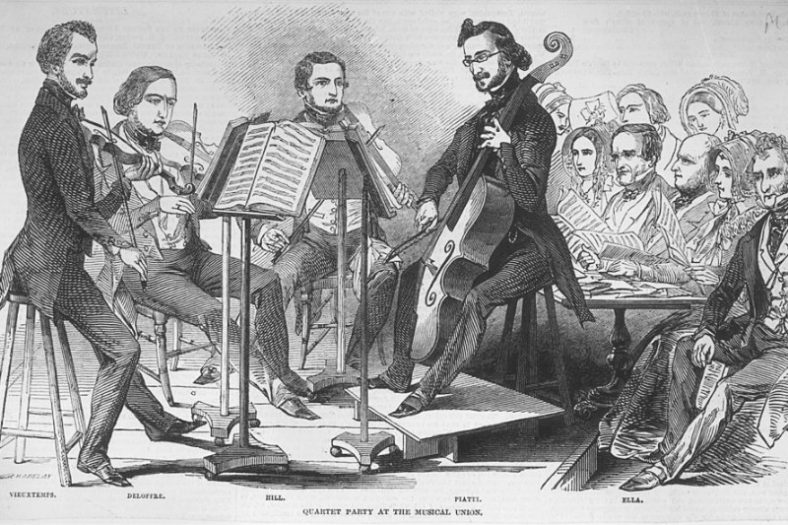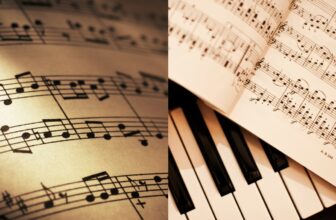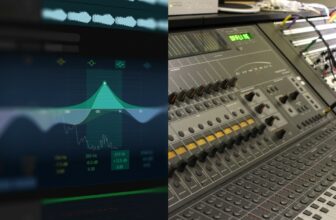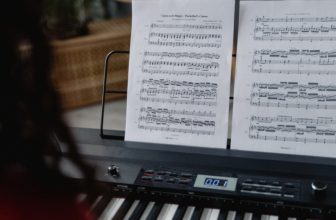What is Program Music?

As a part of western classical music, program music refers to a typically instrumental piece that tells a story with some kind of beyond-musical meaning. Instead of solely creating an atmosphere like abstract music, program music elicits specific responses and feelings in the audience.
While abstract music is often written for its own sake and does not inherit a specific meaning or a reference point, program music tells a story or has a narrative from a poem or a book, or a play through sound. That is why it often has several movements that shift the mood according to the story, such as a calm opening, dramatic or epic middle, and cathartic ending with the summed-up tension in the narrative.
A great example of program music would be “The Rite Of Spring” ballet by Stravinsky or “The Four Seasons” by Antonio Vivaldi.
Contents
What does Program Music sound like?
As the definition of Program Music is “music that tells a story,” it does not have concrete characteristics like other genres. But, program music is often understood in the context of western classical music. So, you can expect to hear background orchestration with many musical movements in a piece.
Although program music does not have a solid frame like, for example, romantic music or baroque music, it does have some characteristics.
The first program music characteristic is that the music always follows the source text, which can be typically a poem, a novel, a short story, or a movie. The music changes according to the story, so there are lots of different emotions, movements, and partitions in a single piece.
The second characteristic is what differentiates program music from opera. Program music does not have any kind of vocals and tells the story through musical notes, unlike opera or other narrative music, in which the story is told through words.
So, in short, you can expect to hear lots of orchestration without any type of vocals, long pieces divided into different partitions, and lots of different feelings and movements in a single program music piece.
Is all Program Music the same?
As program music is a roof term to describe music that tells a story, you can find program music in the shape of baroque music, romantic music, renaissance music, or other types. While program music was heavily associated with romantic music, there are also examples from different eras.
Additionally, each composer mixes different elements in their program music pieces. For instance, Arnold Schoenberg often uses 12-tone scales, serialism, and atonality in his pieces. He used many unconventional techniques to describe different poems of the likes of Richard Dehmel.
On the other hand, one of the most famous and significant program music composers, Charles Ives, was famous for his polyrhythms, polytonality, tone clusters, and his blend of wildly different genres and European techniques to tell his stories through musical notes.
So, you can expect to hear any type of program music in the frame of western classical music. But, two reference points are the lack of any kind of vocals and that there is a specific narrative in the piece.
Where does Program Music come from?
While there is a long history of abstract music, which can be described as music for music’s sake, program music’s roots can be found in small exceptions in history. Music from the renaissance period contains programmatic elements as there are some pieces describing stories or natural phenomena.
One of the earliest examples of program music is “The Fall Of The Leaf” by the renaissance composer Martin Peerson. He tried to describe the shedding of an autumnal tree through his music. Another great example is “The Battell” by William Byrd, who composed his piece with inspiration from the military in the Irish Wars.
It was always discussed if music should be abstract or tell a story or a process. Many consider program music to have less artistic value as they think music should be good without the need for extra-musical narrative. But, it does not matter in the end if the motivation of the artist is purely abstract or programmatic, as music should be evaluated as what it is.
The Evolution Of Program Music
The roots of Program Music can be found in the renaissance era, as some composers created pieces written “about” something. Again, in the latter eras, like the Baroque and Classical eras, there are some examples before program music reached its peak in the Romantic era.
In the Renaissance era, music was merely composed for the sake of music without it being about something specific. This can also be noticed in the names of many pieces as they are named “Symphony No. 1”, “Piano Sonata in C Major,” and similar. This shows that the music is composed without a specific narrative or any concrete thing in mind.
But even in the Renaissance era, there were some first examples of program music like “The Fall of the Leaf” by Martin Peerson. Music with the narrative was mainly left for opera as it is thought that words are better weapons for telling a story.
Later in the baroque era, the music scene changed slightly, but the idea behind the music remained the same. Again there were some examples of program music like the world of Francois Couperin, such as “Les Petits Moulins A Vent,” which tells the story of a little windmill.
In the same era, Bach composed “Capriccio on the Departure of his Beloved Brother,” in which he tells the story of his brother leaving for Sweden with musical notes. Again in the baroque era, one of the most popular classical pieces, “The Four Seasons” by Antonio Vivaldi, tells the story of seasons, which is considered a narrative, making the piece fall into the program music category.
Quintessential Program Music Artists
Charles Ives
Charles Ives is one of the first renowned American modernist composers. He used many different techniques and influences in his compositions, such as the fusion of elements from different genres. He is known for his frequent use of polyrhythm patterns, aleatory elements, polytonality, tone clusters, as well as quarter tones.
The modernist composer created his masterpieces in the early 20th century. Some of his most famous program music pieces are “The Unanswered Question,” “Central Park In The Dark,” “The Celestial Railroad,” and “Three Places In England.”
Edward Elgar
The English prolific composer Edward Elgar is another important figure in the program music world. He was inspired by poems and different places, which became the central idea in his compositions. “Sea Pictures,” “Enigma,” and “Nursery Suite” are some of his most famous program music pieces.
Edward Elgar is a self-taught composer who got his place in the world of academics and was a Roman Catholic in Protestant England. He felt like an outsider in his home country, which was heavily reflected in his work.
Edvard Grieg
The Norwegian composer and pianist Edvard Grieg is one of the pioneer composers of the Romantic era. His music is regarded as some of the most important works in classical music repertoire. Like most romantic era composers, he contributed significantly to program music heritage with his inspiration from Nordic landscapes and fjords.
His best-known work is “Peter Gynt Suite,” which was composed to accompany the famous play of the same name by Ibsen. The excerpts in the suite, such as “In the Hall of the Mountain King” and “Morning Mood,” became some of the most important pieces in the romantic music era.
Arnold Schoenberg
The Austrian-American composer, music theorist, and teacher Arnold Schoenberg is yet another significant modern composer of the program music world. He is considered one of the most innovative composers in history as he tried to break and explore all the boundaries of conventional music.
Some of his famous works are “Verklarte Nacht,” which was inspired by the poems of Richard Dehmel. Schoenberg also supported and worked with Liszt and Richard Strauss to help them achieve their potential. The modern composer frequently used 12-tone scales, serialism, and atonality.
Richard Strauss
One of the first names to come to mind when discussing program music is the German composer, violinist, pianist, and conductor Richard Strauss. He was active in the late romantic era and modern eras and is considered the flower of late German romanticism.
Richard Strauss once said he tried to compose his program music pieces so specific that the audience could even understand the hair color of the characters in his stories. He created something called tone poems, with which he could extend the boundaries of realism in music to extreme levels with his great use of orchestration and widening the expressive range of music.
Conclusion
Program music is a great part of music history. It is music that has a story to tell. Each note in program music pieces is a word that evokes a specific place, feeling, or narrative in the audience. These brilliant program music composers found ways of translating stories, literature, places, and inspirations into musical notes and opened the way for a different musical approach to music.
Today program music is not that common, but still, the perspective it puts on the musicians is there. Also, if you want to hear some modern program music, you can always go to a movie or listen to the orchestral soundtracks of your favorite TV Series or movies.





